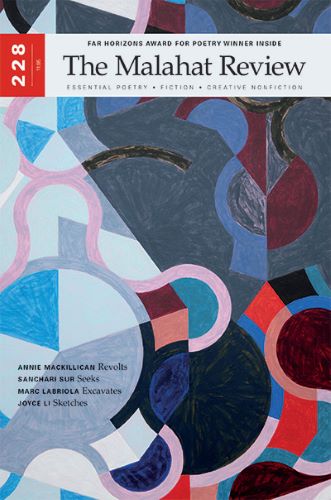World Literature Today – November-December 2010
Volume 84 Number 6
November-December 2010
Bimonthly
Sima Rabinowitz
Every glorious issue of World Literature Today is an argument for print! There is simply no way to duplicate the experience as cyber reading. This is not to say that you might not want to try “Zinio,” the virtual magazine-reading option for WLT. But, for my money (and it’s only $4.95 on the newsstand!) there is no way it could duplicate the feel of the glossy paper, the vibrancy of the large and small format color and black and white photos, the clarity of the illustrations (maps), or the smartly designed pages. This issue’s special section is on India, and the gorgeous, beautifully reproduced full-color, full-bleed photograph that opens the section, “Girl in Red Slippers by the Blue Door,” the work of guest editor and poet Sudeep Sen of New Dehli, is hard to picture on a small screen.
Every glorious issue of World Literature Today is an argument for print! There is simply no way to duplicate the experience as cyber reading. This is not to say that you might not want to try “Zinio,” the virtual magazine-reading option for WLT. But, for my money (and it’s only $4.95 on the newsstand!) there is no way it could duplicate the feel of the glossy paper, the vibrancy of the large and small format color and black and white photos, the clarity of the illustrations (maps), or the smartly designed pages. This issue’s special section is on India, and the gorgeous, beautifully reproduced full-color, full-bleed photograph that opens the section, “Girl in Red Slippers by the Blue Door,” the work of guest editor and poet Sudeep Sen of New Dehli, is hard to picture on a small screen.
In this issue, as in every issue of WLT, you will be introduced to writers from around the world whose work you probably do not know (Austrian poet Clemens Setz; South African fiction and film writer, Rayda Jacobs; Californian Benjamin Bac Sierra; Nigerian fiction writer Sefi Atta; along with many of the writers of India in the special section); and you will learn something you might never have otherwise known about writers who may already be familiar, as in Dina Assouline Stillman’s essay about Aharon Applefeld.
The section on Modern Indian Literature includes the work of 20 writers, some already well known to American audiences and many of whom have studied in and/or now teach in the US (Chitra Banerjee Divakaruni, Ravi Shankar, Vijay Seshadri, Vikram Seth, Meena Alexander), and others likely new to almost every read of WLT (Sunny Singh, Arundhathi Subramaniam, Samaresh Basu). Poetry is especially well represented here. Sen has done a fine job with both the poetry and the prose, presenting a range of styles, tones, and preoccupations.
As always, WLT offers up an appealing mix of original works of poetry and prose, interviews, reviews, and “notebook” introductions to new works from around the world. While it is not ostensibly about poetry, Mangalesh Dabral, a Hindi poet based in Delhi (translated here by Sen), reminds me of literature’s power and of this magazine’s value in his poem “Touch”: “Go inward feel the moist spot touch / See if it still remains there or not in these ruthless times.”
[www.worldliteraturetoday.com/]




